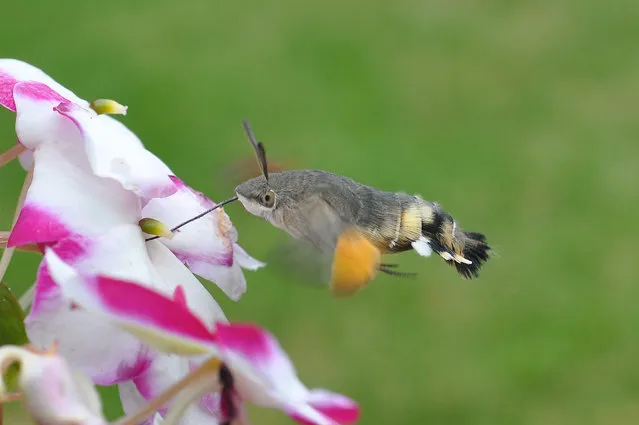
A hummingbird hawk moth, whose wings beat 80 times a second to allow it to hover like a hummingbird over flower heads as it feeds. (Photo by Bob Eade/Butterfly Conservation/PA Wire)
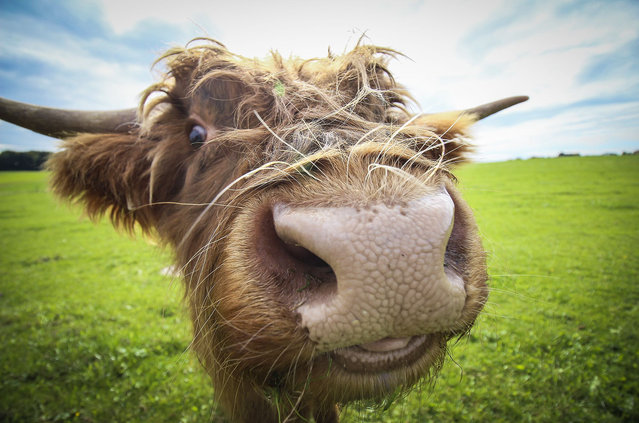
A hungry cow smiles for the camera in Salzburg, Austria. One of a series of funny animal mugshots taken by Chanel Cartell and Stevo Dirnberger during their travels around the globe. (Photo by Chanel Cartell/Stevo Dirnberger/Rex Features/Shutterstock)
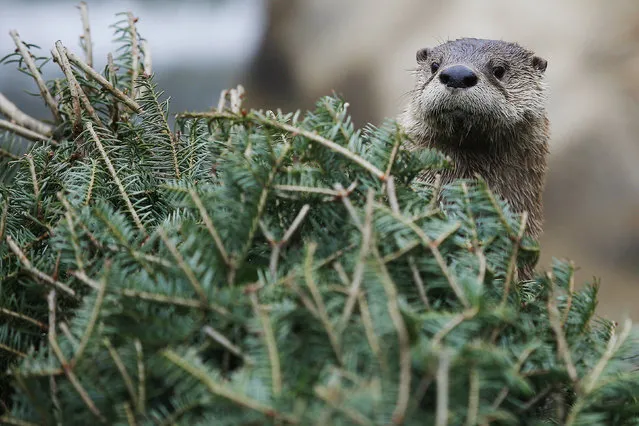
A river otter looks for food stashed in a used Christmas tree at the Buttonwood Park Zoo in New Bedford, Massachusetts in this January 16, 2014 file photo. (Photo by Brian Snyder/Reuters)
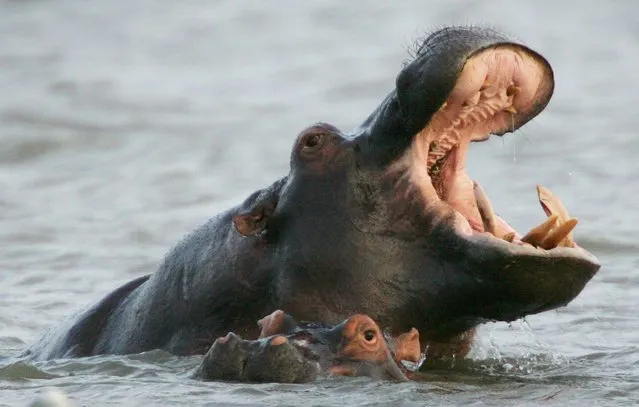
Hippos swim in the waters of St Lucia estuary north of the coastal city of Durban in this April 12, 2006 file photo. You know the fishing is “not run of the mill” when your guide points to the path you're on and says “those are hippo tracks”. But if you are after tigerfish, you sometimes need to stray onto a hippo-beaten path. (Photo by Mike Hutchings/Reuters)
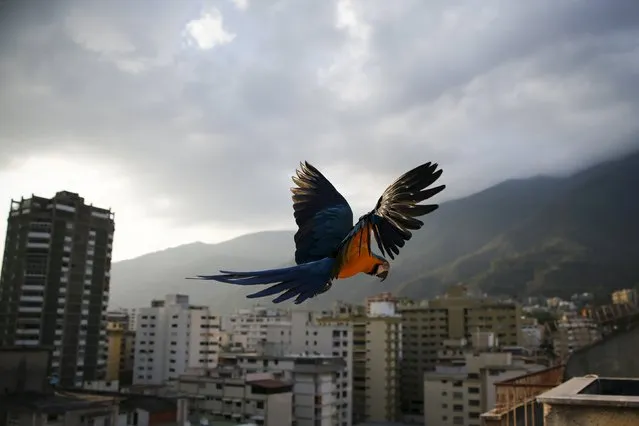
A macaw flies over buildings with the Avila mountain behind in Caracas March 31, 2015. Caracas, the world's second most violent city according to the United Nations, also suffers terrible traffic and residents spend hours in massive lines for scarce products. However, on antennae, rooves and windowsills, blue-and-yellow macaws (or Ara ararauna) break the harsh routine. Though originally native to rainforests from Panama to Paraguay, they have adapted well to Caracas thanks to the exuberant tropical vegetation surging between skyscrapers. (Photo by Jorge Silva/Reuters)
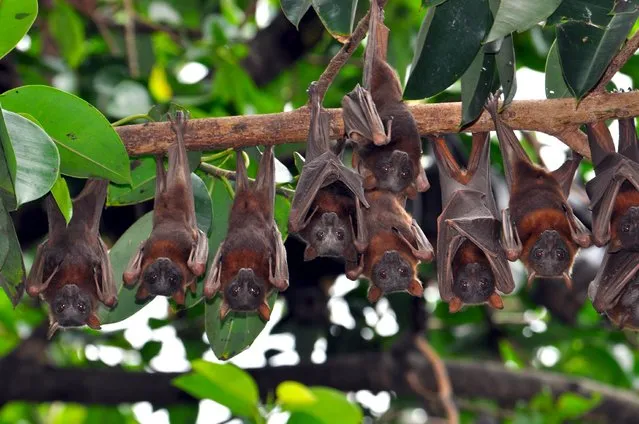
A group of Australian native animals known as Little Red Flying Foxes hang from a tree in this handout picture taken January 20, 2013. Picture taken January 20, 2013. (Photo by Dr Leonie Valentine/Reuters/UWA)
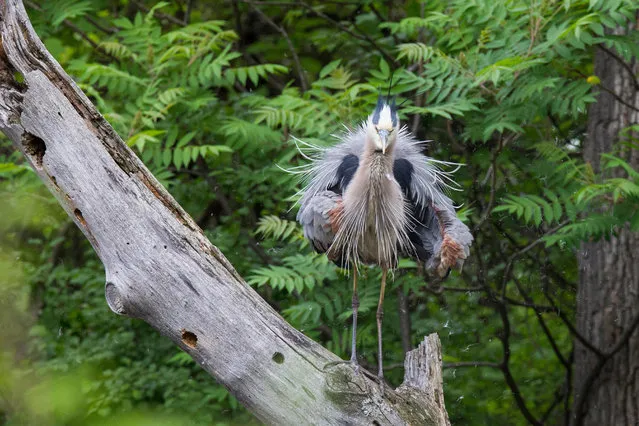
Great blue heron in breeding plumage, Quebec, Canada. (Photo by Mircea Costina/Alamy Stock Photo)
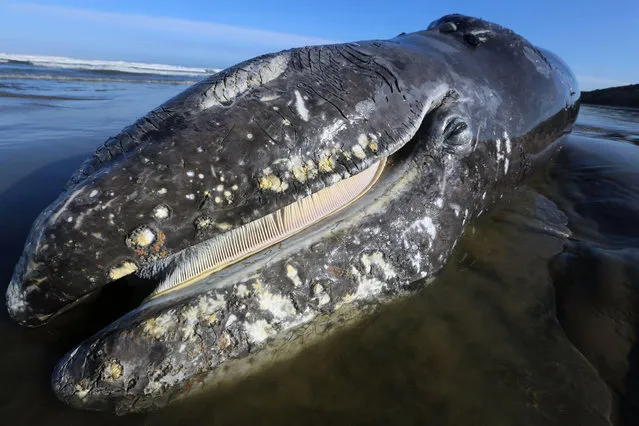
A beached gray whale calf along the Oregon coast national wildlife refuge. (Photo by USFWS Photo/Alamy)
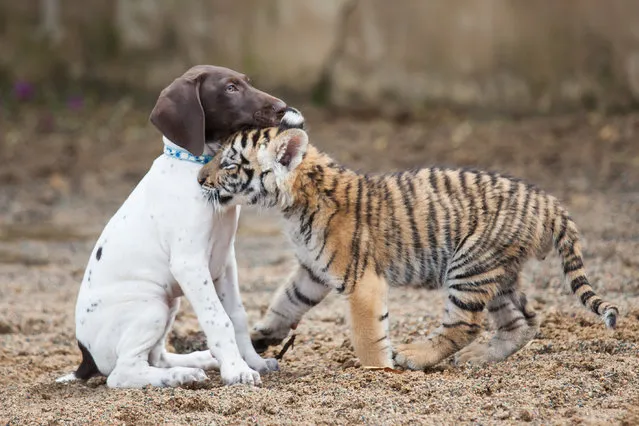
Best friends, “Hunter”, a seven-week-old tiger, plays with Chelsea, a ten-week-old German Pointer puppy, at The Farm Inn on December 19, 2014, in Pretoria, South Africa. An adorable Bengal Tiger cub has become best pals with a puppy. The inseparable duo are taken for walks together every day – where they play-fight, wrestle and stalk one another through the grass. Three-month-old tiger “Hunter” was born at The Farm Inn Wildlife Sanctuary in Pretoria, South Africa. (Photo by Greatstock/Barcroft Media)
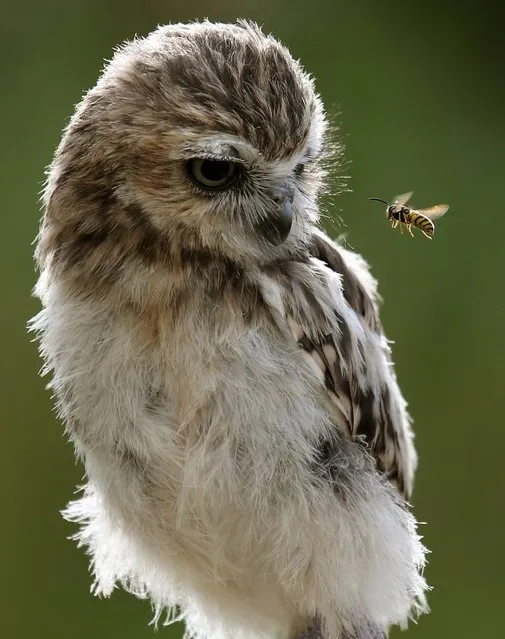
One of a pair of Burrowing Owls which are two of the newest members of the Bird of Prey Shows at Blair Drummond Safari Park on August 8, 2014. The birds, weigh only 120g each and each standing about 15cm height arrived at Blair Drummond in July. They were only about the size of a chicken egg and weighed 25 grammes. It is only in the last few days have the made their debut in the Bird of Prey show. (Photo by Andrew Milligan/PA Wire)
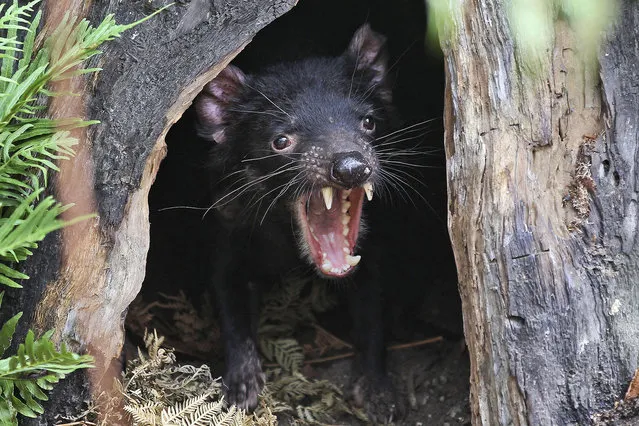
In this December 21, 2012 file photo a Tasmanian devil called Big John growls from the confines of his new tree house as he makes his first appearance at the Wild Life Sydney Zoo in Sydney, Australia. The Tasmanian devil is an endangered species due to a mysterious disease that has slashed their numbers in Tasmania's wilderness by as much as 90 percent since it was discovered two decades ago. (Photo by Rob Griffith/AP Photo)
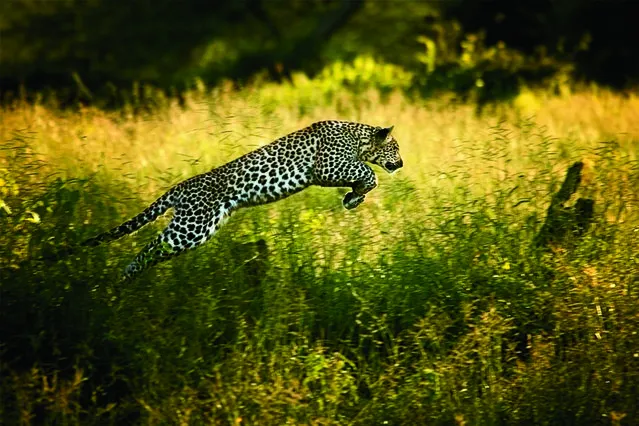
In a hunting game with her mother, a young leopard leaps through tall grass. This image is featured in National Geographic's exhibition “Women of Vision: National Geographic Photographers on Assignment”. (Photo by Beverly Joubert/National Geographic)
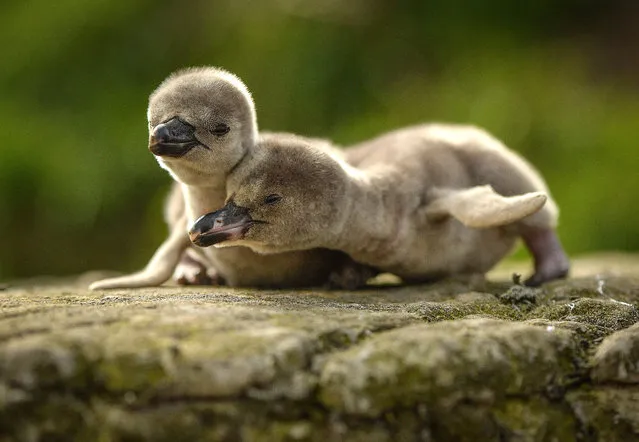
Penguins are always a popular attraction at zoos and now visitors to Chester Zoo have six more adorable babies to meet. The new-born Humboldt penguins hatched on 11th April 2015 weighing just 68kg each in what has become cracking news for the zoo. The chicks named Panay, Papua, Bali, Sumatra, Sulawesi and Sumba after exotic South East Asian islands will be able to fly through the water at speeds of up to 25mph when fully grown, but now they are just taking their tentative first steps in life. (Photo by Caters News)
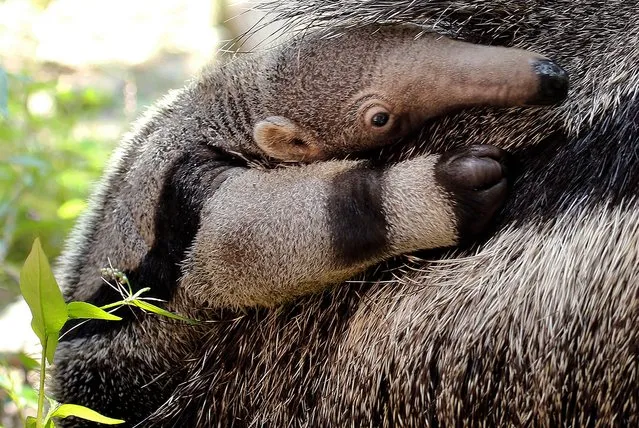
In this Tuesday, August 5, 2014 photo released by the Roger Williams Park Zoo, a baby giant anteater clings to his mother “Corndog” at the zoo in Providence, R.I. The yet-to-be-named baby was born July 25. Anteaters, which can eat up to 35,000 termites and ants per day, are native to Central and South America. Only 5,000 are thought to remain in the wild. (Photo by Brett Cortesi/AP Photo/Roger Williams Park Zoo)
13 Jun 2016 11:03:00,
post received
0 comments
